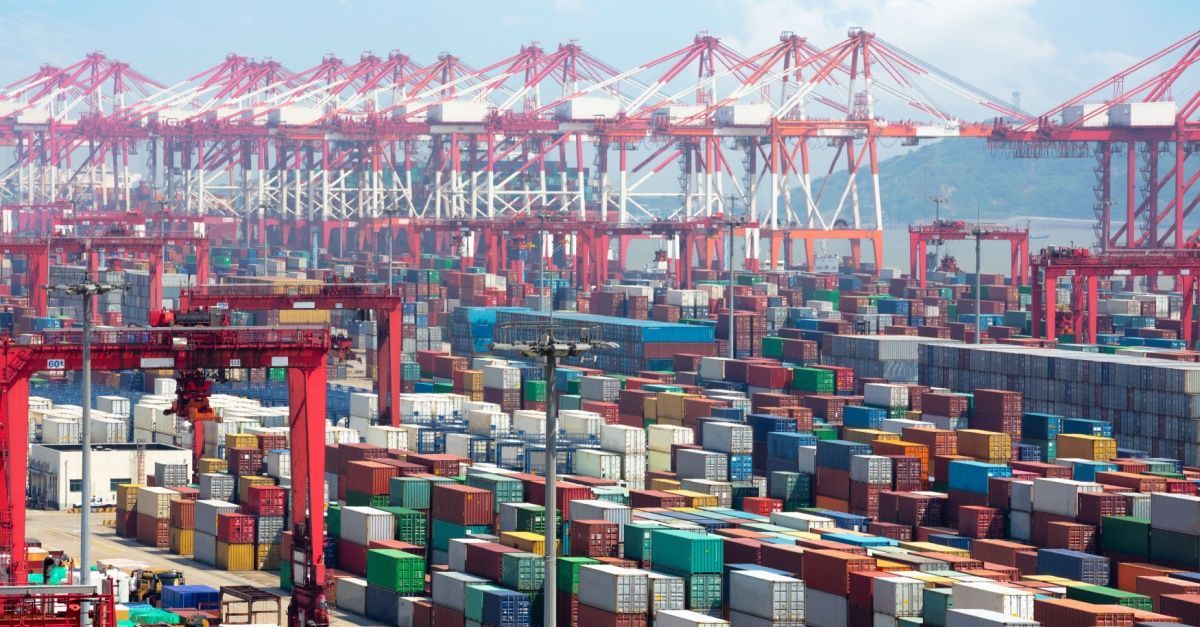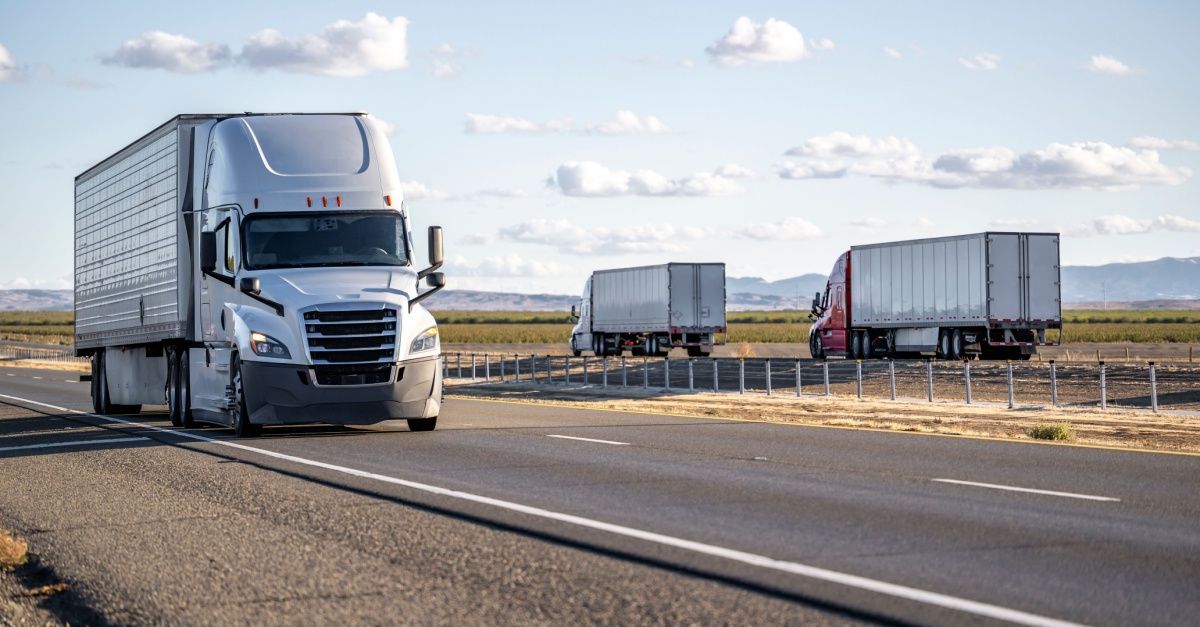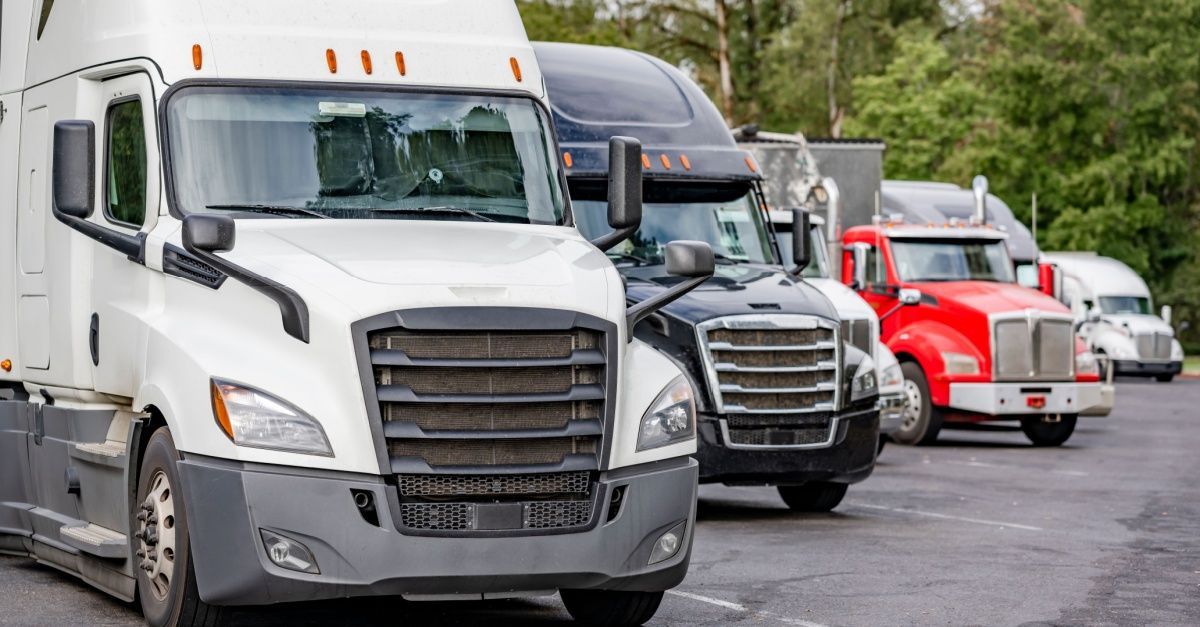Pressure on Trucking Mounts in Shifting Market
Blog Post CTA
With shifting trade policies, regulatory rollbacks, soft volumes, and rising operating costs, the American freight sector is at a critical juncture. The continued effects of tariff-driven inventory shifts and the resulting slowdown in truckload volumes are forcing shippers and carriers alike to reevaluate strategies that, just two years ago, seemed reliable.
Meanwhile, contract rates have hit a plateau, suggesting carriers have found a pricing floor. When you add to that the Trump administration’s new 25% tariff on foreign-made trucks, the cost pressures only deepen. At the same time, federal regulators are clamping down on non-domiciled CDL issuance after a series of fatal crashes, while a collapse in soybean exports to China threatens to cut agricultural freight demand across the Midwest.
Continue reading to find out more.
Truckload Market Slows After Import Rush
The truckload sector saw reduced activity in August following an import surge in July, driven by shippers pulling freight forward to avoid tariff exposure. According to DAT Freight & Analytics, dry van volume dropped 8% month over month, while reefer and flatbed loads declined by 6%. Spot rates fell across the board — flatbed by 6 cents, dry van by 2 cents, and reefer by 1 cent, reflecting the softening environment.
Contract rates are also under pressure as carriers begin negotiating 2026 bids. DAT’s chief of analytics, Ken Adamo, said August’s softness aligned with prior forecasts. “There’s nothing to suggest that’s going to change anytime soon,” he said. Cargo typically moved in late summer, such as back-to-school and holiday goods, was already in inventory, having arrived earlier in the year.
Contract Rates Flatline as Spot Market Rises
Contract rates in the dry van truckload market are showing signs of stagnation. As of early September, long-term rates dipped just 0.3% year over year, a marginal change compared to the steeper 2% decline from 2023 to 2024. The modest fall suggests carriers may have reached a pricing floor, especially as operational costs have soared 33% since 2019, according to the American Transportation Research Institute.
Over the same period, contract rates have increased by only 17%, intensifying the financial squeeze on fleets. Spot rates, by contrast, are slowly increasing and now represent the lower band of the pricing structure. Broker data primarily from smaller fleets and owner-operators shows a divergence from contract data, which captures larger shipper-carrier relationships. This widening gap suggests the spot market is tightening first.
Despite a decline of 100-200 carriers per week (based on Federal Motor Carrier Safety Administration data), contract rates remain largely stable. Shippers appear hesitant to push further on costs, fearing longer-term exposure in an unsustainable market. Many still anticipate future rate hikes, as reflected in the Logistics Managers’ Index.
Trump Announces 25% Tariff on Foreign Trucks
President Donald Trump announced that he will impose a 25% tariff on foreign-made heavy-duty trucks, effective October 1, citing national security concerns and the need to support domestic truck manufacturers, including Peterbilt, Kenworth, Freightliner, and Mack.
The announcement follows an ongoing U.S. Department of Commerce investigation into the national security implications of importing medium- and heavy-duty trucks and related parts, under Section 232 of the Trade Expansion Act of 1962. Industry backlash has been swift. The American Trucking Associations (ATA) previously opposed the proposed tariffs, arguing that they would exacerbate cost pressures in a market already operating under razor-thin margins.
“Motor carriers can’t just absorb higher truck prices or pass them along to customers,” ATA stated in May. A 25% tariff on Mexican-built Class 8 trucks would increase average retail prices from $170,000 to $224,000 after taxes, a figure deemed “cost-prohibitive” for most carriers.
FMCSA Tightens Non-Domiciled CDL Rules
The Federal Motor Carrier Safety Administration (FMCSA) has issued an emergency interim final rule sharply restricting eligibility for non-domiciled commercial driver’s licenses, citing fatal crashes and widespread state-level noncompliance. Effective immediately as of September 29, non-domiciled CDLs will only be available to foreign nationals with H-2A, H-2B, or E-2 visas.
And Employment Authorization Documents (EADs) alone no longer qualify. The rule bypasses standard rulemaking procedures, which FMCSA argues would have prompted a surge of unqualified applications. The agency cited five fatal crashes since January involving non-domiciled drivers, including a high-profile August crash in Florida and a multi-vehicle March collision in Texas.
Approximately 200,000 current CDL holders and 20,000 permit holders will be affected, with only an estimated 6,000 qualifying annually under the new rule. States must immediately pause CDL issuance until they meet new requirements, including DHS verification, in-person renewals, and conspicuous markings indicating non-domiciled status on licenses.
Collapse in Soybean Exports Threatens Jobs
A steep drop in U.S. soybean exports to China is triggering alarm across the transportation sector, with potential repercussions for trucking, rail, and port operations. China, once America’s top soybean customer, has drastically reduced purchases in favor of South American suppliers due to enduring trade tensions and steep retaliatory tariffs, currently around 34%.
For the 2025-26 crop year, China has placed no new U.S. soybean orders — an unprecedented blow as peak harvest season approaches.
In 2024, soybean exports to China were valued at $12.8 billion, or 25% of all U.S. soybean exports, according to the USDA. The sudden collapse could significantly reduce freight volumes across top-producing states like Iowa, Illinois, and Minnesota.
Mike Steenhoek, executive director of the Soy Transportation Coalition, warned that the downturn threatened jobs tied to export infrastructure, particularly in the Pacific Northwest. “It really imposes hardship on the freight rail industry and other transportation modes,” he said.
Shippers Boost Private Fleet Use Despite Low Rates
U.S. shippers are increasingly relying on private, in-house trucking fleets even as for-hire spot and contract rates remain favorable. Data from the National Private Truck Council (NPTC) shows that private fleet shipments rose 11.7% year over year in 2024, driven by a desire for greater supply chain control. Technology and improved visibility have enabled this shift, allowing shippers to manage both outbound and inbound freight more precisely.
Tom Moore, NPTC executive vice president, said the importance of private fleets has “become more elevated” post-COVID. Mark Rourke, CEO of Schneider National, noted the private fleet share of the full truckload market has shifted from a near-even split to 55% private versus 45% for-hire. FMCSA data supports this, showing a 15.9% rise in the number of U.S. private fleets since 2019.
The use of private fleets for inbound shipments is also increasing, jumping from 31% in 2022 to 43% in 2024 among surveyed shippers. Penske’s Jim Lager emphasized that shippers are prioritizing control and reliability, not just cost.
California Repeals Electric Truck Mandate
The California Air Resources Board (CARB) has officially repealed its zero-emission truck purchasing mandate for private fleets, signaling the end of the state’s landmark electric truck sales mandates. The move, finalized on September 26, follows the Trump administration’s rollback of the Advanced Clean Fleets rule and revocation of companion manufacturer sales requirements.
Without federal authorization to enforce stricter-than-national standards, California’s program collapsed under pressure from politics and the law. Though framed as a setback, industry voices suggest the repeal opens the door for a more incentive-driven, voluntary adoption model. “Incentives are a powerful tool to encourage and advance the adoption of ZEVs,” said Nick Chiappe of the California Trucking Association.
Demand for such programs is strong, as
California’s $200 million electric truck and bus fund was fully claimed on its first day. While the heavy-duty EV market remains nascent, with only 422 new electric big rigs sold in 2024, the medium-duty segment is growing. CARB reported more than 30,000 zero-emission trucks were sold in 2024, led by models such as the Tesla Cybertruck and Amazon delivery vans.
Navigate Market With Entourage Freight Solutions
Entourage Freight Solutions stands out with its extensive background and expertise in food service logistics. Our unique approach, honed in the food supply chain, ensures an unmatched service level and extreme attention to detail in meeting all our shippers’ needs.
Our platforms use the latest cloud-based, GPS-enabled technologies. They can track drivers regardless of location, continuously reroute shipments based on the dynamics at play, such as weather or traffic, and account for
real-time changes in market rates. At Entourage Freight Solutions, we offer a broad range of unsurpassed services. These include:
1. Full Truckload (FTL): For shipment requiring a dedicated whole truckload.
2. Less-than-truckload (LTL): For companies moving multiple LTL shipments to different locations or consolidating LTL goods from other companies to get a lower all-in rate.
3. Refrigerated Trucking or “Reefer” Transportation: Leveraged to avoid spoilage and damage to temperature-sensitive goods.
4. Cross-Docking: With locations in Shelby, Ohio, Cedar Rapids, Iowa, and Romulus, Michigan, that serve as cross-docks for strategic consolidation, storage, and end-to-end distribution programs.
Request a quote today to see how Entourage Freight Solutions can help with your freight movement and other supply chain needs.









